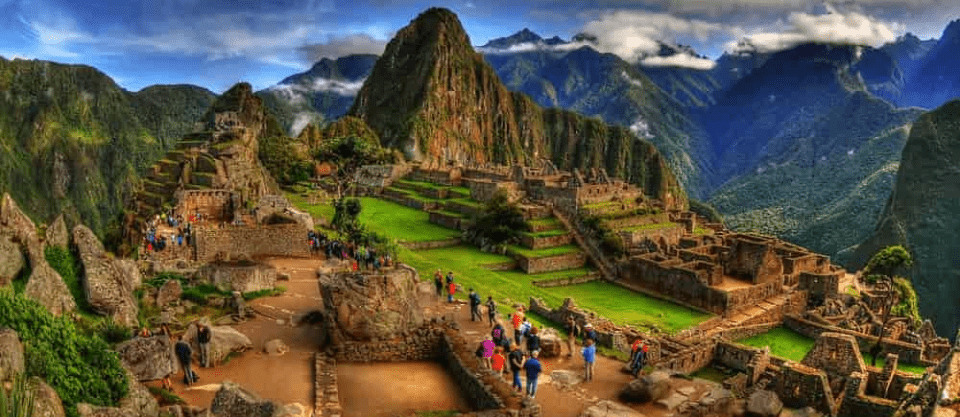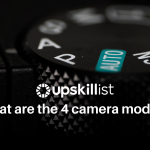
What Is HDR Photography? A Beginner’s Guide To High Dynamic Range
Cameras are great tools—but they have a few shortcomings. Unlike the human eye, a camera can’t adjust for shadows and highlights in the same scene. In a high contrast scene, shadows leave details in the dark while highlights overexpose bright areas into white blobs.
The solution? HDR photography, or high dynamic range. So, what is HDR photography? HDR photography reveals details lost in the shadows or highlights of a single shot by merging several images, all taken at different exposures together into a single image. If this is done wrong, the technique can easily lead to an image that looks over processed, however when done right, HDR is an excellent tool for revealing all the details in a high contrast scene.
What is HDR photography?
Dynamic range is a term used to refer to the difference between the darkest and lightest areas of an image. Scenes with a big difference between those light and dark values leave shadows too dark and highlights too light. The photographer has to make a choice—to shoot in the middle and get both dark shadows and light highlights, to expose for the highlights but leave much of the image too dark, or to expose for the shadows but leave much of the image too light.
The human eye can adjust for those differences in light and dark, but a camera can’t. That means that scene that took your breath away in person isn’t so great on a single photo.
High dynamic range photography tackles that problem. When photographers take a high dynamic range photo, they don’t just take one photo. They use what’s called bracketing, or taking the same shot at different exposures. Many high end DSLRs have bracketing modes that the photographer can customize, so the camera automatically takes several shots at different exposures, or the photographer can shoot in manual mode and adjust the exposure between each frame. There’s generally at least three photos involved, though often more. One image exposes for those dark areas, another for the mid-tones and a third for the highlights. Those images are then merged together, creating an image with a higher dynamic range than the camera was able to capture in a single image.
HDR Photography Tutorial: What You Need
High dynamic range photography doesn’t mean you need the latest, greatest camera, but these things will come in handy:
- A camera with manual modes, preferably a DSLR or mirrorless camera. If you’re shopping for a camera (i.e. don’t own one yet), look for one that has Auto Exposure Bracketing, or AEB, which will take those multiple photos for you.
- A tripod. If the camera moves at all between shots, they won’t line up in post processing. Use a tripod to help ensure those photos will align properly.
- You can stitch together HDR photos using Photoshop, or there’s also dedicated software that makes the process a little easier. Photomatix is the most recommended. If you want to experiment before spending money on software, Luminance HDR (http://qtpfsgui.sourceforge.net/?page_id=10) is a good free option. If you want to learn more about proven and tested photoshop techniques, you can check out our online photoshop course.
 HDR Photography Tutorial: The Steps
HDR Photography Tutorial: The Steps
Choose your scene and set up the tripod.
First, choose what you want to shoot. HDR works great for scenes with a lot of contrast. However, HDR cannot be used on a moving subject, or the images won’t align in post processing. HDR is often a favored technique for landscapes. Once you have decided what to shoot, set your camera up on a tripod, so there’s no movement in between shots.
Decide on the number of shots.
Technically, HDR can be done with just two photos, or dozens. Decide how many shots will work for your scene. Scenes with the most contrast will need more shots, but keep in mind, the more shots you combine, the more you’re likely to get that over processed look. Ideally, you should take at least three shots, one each exposed for the highlights, mid-tones and shadows. Then, if your camera has Auto Exposure Bracketing, turn it on and tell the camera how many photos you would like to bracket.
Set your exposure.
Aperture priority mode is the best option for shooting an HDR sequence, because you want the aperture to remain consistent between shots, otherwise your photos will have varying levels of sharpness. You could also shoot in manual mode (and if you don’t have AEB on your camera model, you’ll have to use manual), and keep the aperture consistent and vary the between photos. Choose an aperture that works for your scene—remember that narrow apertures keep the scene sharp. Most HDR photos are landscape images, taken with an aperture of f/11 or more.
Noise from high ISOs is enhanced using the HDR technique, so set your ISO as low as you can. You’ll also want to set your metering to evaluative, and make sure your white balance setting is getting the mode you want. Setting the file type to RAW is also good for HDR.
Set your focus.
You want your focus to stay the same between each shot (or you’ll end up doing focus stacking instead of HDR). Using manual focus is a good idea, since it’s helpful for landscapes anyway. If you’re not comfortable in manual focus, you can use autofocus, you just need to lock the focus so it doesn’t change at all in your sequence of images. To do this, you can focus then flip the switch on your lens over to manual, without adjusting the focus ring. Or, you can use the focus lock feature on your DSLR.
Take the shot.
Now, you’re ready to take the shot. Use a remote or the self-timer feature on the camera if you don’t have a remote. That way, you aren’t introducing any unnecessary camera shake when you touch the camera. If you turned the AEB on, the camera will take several shots for you. If you are working with a camera that doesn’t have the bracketing feature, you’ll need to be on manual mode and adjust the shutter speed between each shot. Just how much you adjust between shots depends on how many photos you decided on and your subject—you’ll want at least one image exposed for the shadows and one for the highlights, with a few in between.
Combine the photos.
Once you have all your bracketed images, it’s time to put them together. The exact process you use depends a bit on your choice of software. You can use Photomatrix or Luminace HDR, software designed just for HDR photography. You can also use Photoshop, heading into File > Automate > Merge to HDR and select your images.
That’s it—while HDR may seem complex at first, it’s not too tough to tackle once you understand that it’s simply merging photos taken at different exposures together. Of course, once you’ve mastered the beginning steps, there are many more ways you can expand your use of HDR through more advanced editing techniques, stitching more images together, and exploring different subjects with HDR. Grab your camera and tripod, and head out and experiment with HDR photography.
Looking to sharpen your photography skills? Join our top-rated professional photography classes today!
1. Create a design with every day objects
Great abstract images often look more like something a graphic designer put together than an actual photograph. To get this effect, create a design with an ordinary object that you find around your home. That can mean twisting a wire, curling a piece of paper or arranging glass bottles into a pattern. The possibilities are endless, but try searching for an item that is easy to manipulate and can create an unusual pattern or shape, then get in close so the original object is nearly unidentifiable.
 2. Photograph nature up close
2. Photograph nature up close
Items that we see in nature every day can often be rendered into abstract images simply by getting up close. Put a macro lens on your DSLR and head outside, even if it’s just your backyard. Look for objects that create a pattern or texture, like the veins on a leaf or the bark on a tree. Watch for multiple items coming together to create a pattern too, like the way multiple leaves splay out of a plant.
3. Play with refraction
Light bends and refracts. Capitalize on this quality and turn it into an easy but fun abstract photo shoot. Place glasses of water in front of a pattern, and the glass will disrupt that pattern. Change it up by trying different objects or patterns behind the glasses, or using colored glassware instead.
4. Shoot through another object
An easy way to turn any photo into an abstract is to shoot through an object. This can be as simple as shooting through a glass window on a rainy day, or experimenting with different household items. What happens when you shoot through a plastic grocery bag? A glass bottle? A pair of panty hose? An open weave sweater? There are many possibilities, and you’re only limited by your imagination (and of course objects that still let in enough light to create a photo).
5. Try an out-of-focus shot
Not too fond of putting objects over your lens? Simply take a shot that’s intentionally out of focus. Use manual focus mode to render objects into blurs. This works well with colorful objects that have a defined shape, or multiple objects that create a pattern. Along with experimenting with the manual focus, try it out at different apertures too.
6. Experiment with colored filters
Colored filters are thought to be useful for just film cameras, but that’s not always the case. Using a colored filter to turn an ordinary object into an unusual color can be a fun experiment in abstract photography. For example, what happens when an orange isn’t orange? While it’s fun to do this with colored filters so you can see the effect as you shoot, you can also skip out on the expense and apply a colored filter digitally in post production.
 7. Explore with editing
7. Explore with editing
While over-editing is a big no-no for photos like portraits and landscapes, it’s okay to have a hey day with editing an abstract photo. Flip the photo around, apply selective blur, change the color, dramatically enhance the contrast, turn the saturation way down or way up. When you are trying to make a photograph abstract anyways, you don’t have to worry about editing it to the point of making it look fake, since that’s sort of what you’re going for anyways.
8. Take a close up of a pattern or texture
Patterns and textures, when shot in macro, create great abstract images. Look for objects with a repeating pattern, or an interesting texture. Use a macro lens and get in close until you can’t quite tell right off the bat what the object actually is. This method works for objects lying around your house, elements in nature, or things you see while walking through town.
9. Play with blur
Most of the time, blur is avoided in photography, but blur is also a great way to turn an ordinary image into an abstract shot. There’s more than one way to play with blur. Try panning while the shutter is open, even if the subject is not moving. Panning turns scenes into abstract streaks of color. Or, you can zoom while the shutter is open, which will leave the center of the photo fairly intact with a starburst effect on the edges.
10. Try freelensing
Want to play with depth of field and perspective without spending big bucks on a tilt shift lens? Freelensing techniques, where the lens is actually separated from the camera and held in front, can be used to create a dreamy effect to images, which can be neat to use for an abstract capture. Freelensing is not for the faint of heart though, it involves some minor modifications to the lens, like in this tutorial (LINK to https://fstoppers.com/gear/start-freelensing-diy-tutorial-9600).
Because the camera is limited to capturing just what we can see, abstract photographs come with an instant awe factor. Abstract photography ideas like getting in close on a pattern or shooting through an object create great images that add an interesting spin on the photographer’s perspective of the world_._
Looking to sharpen your photography skills? Join our top-rated professional photography course today!



